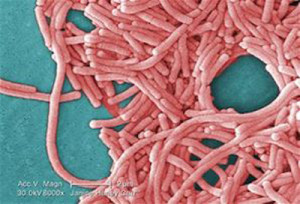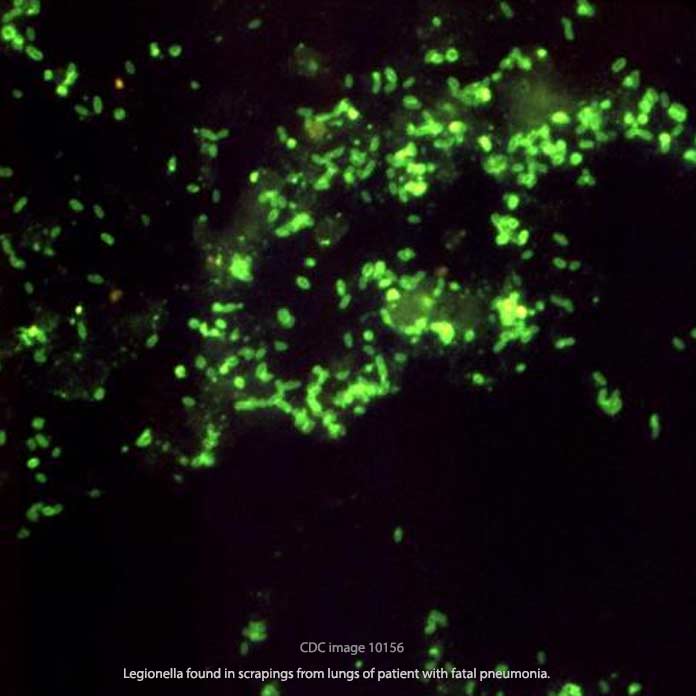As a result of of this summer’s South Bronx outbreaks that left 12 people dead and sickened more than 130, New York legislators have issued Emergency Legionella Regulations in an attempt to prevent future outbreaks.
These regulations are pioneering. Since 1976, when the first recognized outbreak of Legionnaires’ Disease occurred at the Bellevue-Stratford Hotel in Philadelphia, PA, very few U.S. states or cities have implemented regulations to control the growth of the Legionella pneumonia bacteria in large buildings, medical facilities, and hotels. According to a September 2015 study,1 only 10 states have developed proactive Legionella prevention guidelines (defined as standards which “incorporate recommendations on Legionella primary prevention in the built environment, with detailed information on the appropriate prevention measures to take”):
- Wisconsin: (The “Wisconsin Protocol,” 1987, which first structured guidelines for controlling Legionella in cooling towers. Although initially distributed to public health agencies nation-wide, these protocols have not been updated or redistributed)
- Maryland: (1999 / 2000, recommendations to prevent and control Legionella in acute care hospital settings)
- Texas: (2000, prevention guidelines aligned with Maryland’s recommendations)
- California: (2000, 2004, multiple governances directing the inspection and maintenance of cooling towers. California consistently ranks as the state with the fewest annual cases of Legionnaires’ Disease)
- Nevada: (2002, a policy to prevent and control Legionella in mental health facilities)
- Louisiana: (2004, engineering and water management procedures for cooling towers, hot water systems, and spas. These recommendations were based upon an American Society of Healthcare Engineers (ASHE) Technical Document that outlined how to implement Joint Commission for the Accreditation of Healthcare Organizations (JCAHO) standards).2
- South Dakota: (2005, guidelines for the control of Legionella in ornamental water features in hotels, conference centers, restaurants, and offices) as well as in health care facility water supply systems
- New York: (2005, the New York State Department of Health letter to hospital administrators recommending quarterly Legionella environmental sampling in transplant units, with additional encouragement to self-initiate processes to determine the need for routine environmental testing in non-transplant units)
- New Jersey: (2009, guidelines for the prevention of Legionella in hospitals)
- Utah: (guidelines to prevent Legionella in the water distribution systems and HVAC of hotels and other buildings)
At the local level, guidelines for legionellosis prevention have been issued by Allegheny County Health Department in Pennsylvania (1992; revised 1997) and the city of Garland, Texas (2007).

New York’s latest emergency regulations, issued in August, provide instructions and deadlines mandating the compulsory inspection, testing, and maintenance of cooling towers, such as the one at the Opera House Hotel responsible for the first South Bronx outbreak. They require that building owners repeat inspections every 3 months while the systems are in use over the summer months, when Legionella is most like to spread. They also include a provision that all building owners shall design and have a regular maintenance plan in place by March 1, 2016, patterned after section 7.2 of ANSI / ASHRAE 188-2015 (“Legionellosis: Risk Management for Building Water“), subject to final approval on June 26, 2015.
Already these forward-thinking regulations have had a measurable impact, leading to the identification of the Legionella bacteria in schools, workplaces, public buildings, and community facilities before infection can occur.
From a legal point of view, they will also serve as a strong point of reference for future legal actions where Legionnaires’ Disease outbreaks may occur in New York state because building owners have been negligent in complying with these clearly defined, widely publicized mandates.
Sources:
- Parr A, Whitney E, Berkelman R. J Public Health Manag Pract. 2015 Sep; 21(5): E17–E26. Published online 2015 Jul 29.
- Woodin D, Erickson D, McLaughlin S, Samet D, Stevens G, Keane T. Regulatory Advisory: Waterborne Pathogens—Compliance With JCAHO Requirements. Chicago, IL: American Society for Healthcare Engineering; 2001.
